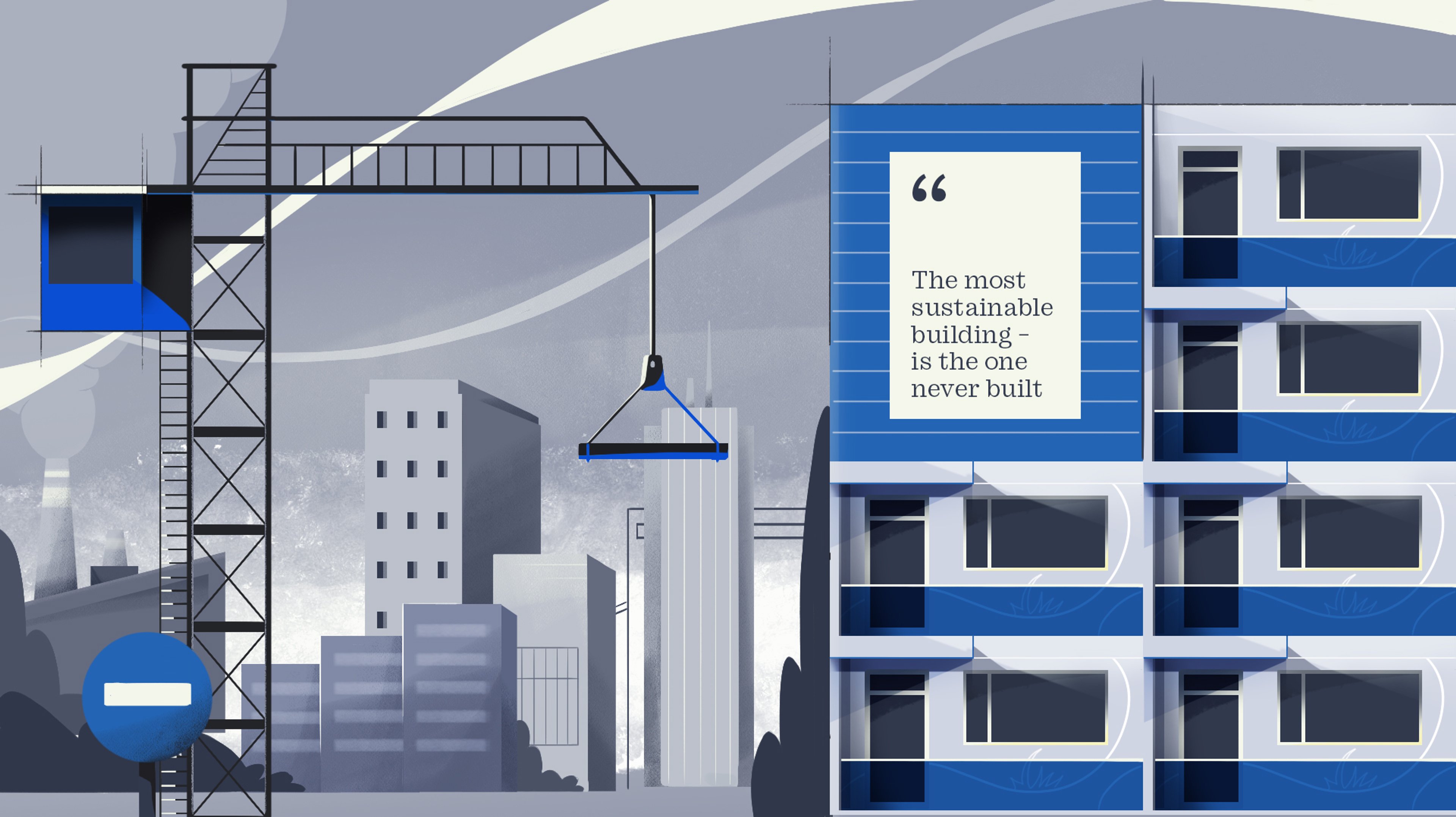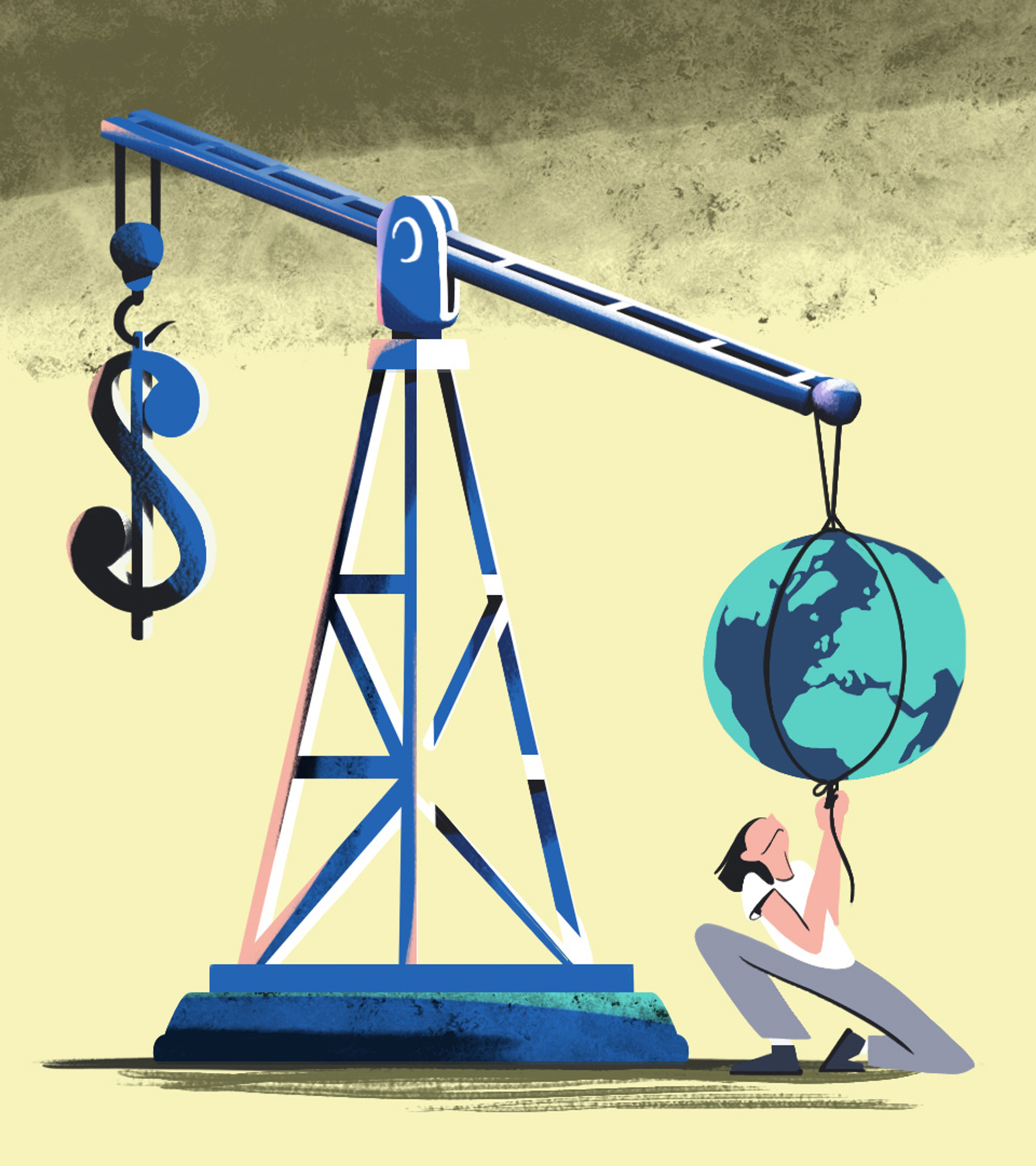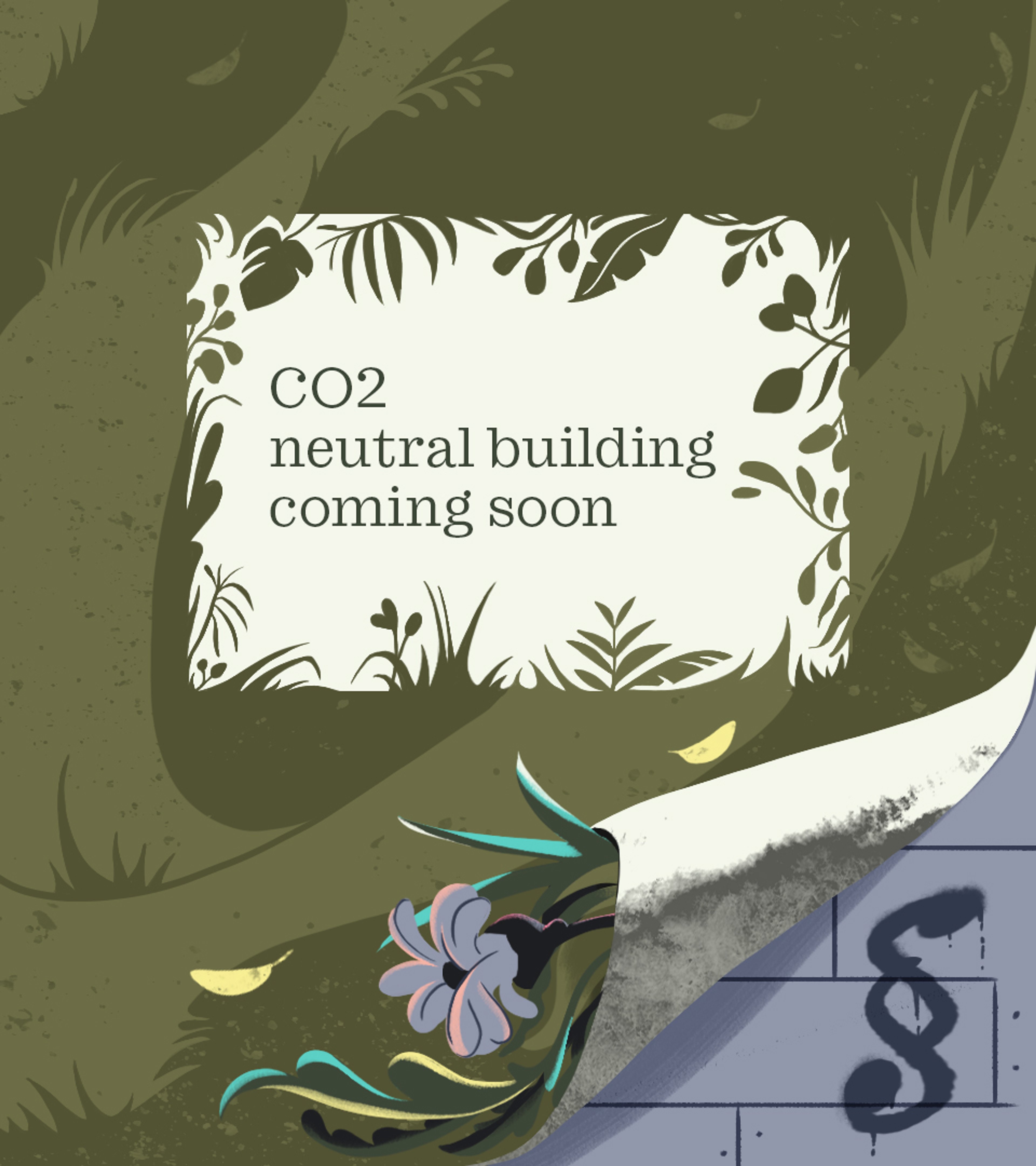The Branding Dilemma in the Built Environment

Written by
Let's face it, the building industry is (more often than not) a master in stretching the truth about sustainability to sell its ideas to the public. But the vivid flow of sustainability labels might end with the new directive on "Green Claims" from the EU – automatically raising the self-examining question of how we should connect sustainability to the built environment in our branding. What happens when the wild wild west of sustainability branding meets the anti-greenwashing regulations of the future?
From carbon-neutral neighbourhoods, net zero skyscrapers, and even man-made-island developments, we see the term "sustainability" being used in very broad strokes across the building industry. The banners promoting these projects and campaigns are occasionally fitted with a beautifully branded identity, bespoke typography, and rendered images of what a "sustainable" lifestyle in these future spaces might look like.
But these days could be coming to a fastidious close, and perhaps to the chagrin of the architecture and construction firms that have had the free reign to promote the term sustainability to fit their bottom line.
The legality of these sustainability claims and the future of what companies can claim about their product's impact on the climate is currently debated and discussed in Brussels. The European Commission is placing the world of branding and corporate advertising under a microscope as the fight against greenwashing intensifies with the climate crisis. Ready or not, regulations are coming.
It's essential to raise the flag here that greenwashing and sustainability don't always equal one another. Meaning that you can be sustainable without greenwashing – and that greenwashing naturally exists without necessarily being sustainable. Hence "greenwashing". And that goes for all industries. Especially our own. When it comes to the branding around new projects – and in this case, around the architecture firms and building industry as a whole – the new regulations might potentially push a more transparent communication than we've seen so far. It creates a great potential for engaging in a more thorough discussion of what sustainability really means.
So as companies across industries are moving towards adopting scientific climate models and impact reporting frameworks, how they communicate about their endeavours needs a solid foundation rooted in data and directives. Among industry competitors moving quickly to bridge brand and sustainability strategies, those with paper-thin sustainability claims stick out like a sore thumb.


At its core, the EU Green Claims Directive promotes a ban on environmental claims, such as being CO2 neutral or carbon neutral, if these claims are based on carbon offsetting schemes. For the architectural- and building industry, the specific company in question would have to be fully committed to decarbonising its value chain for a company to claim their carbon-neutral status. No offsetting. No carbon capture. No cutting corners.
As this legislation advances through the EU Commission, its ripple effect on the building industry has yet to be ironed out specifically, but if keeping the integrity of the green transition and protecting consumers from false environmental claims is at the centre of the legislation - then applying these directives to an industry that is one of the most material-intensive and most significant emitters of carbon seems par for the course.
However, the crossroads that the industry can see itself in in the not-too-distant future is how it will recalibrate its branding. Hereinafter how they talk about the negative and positive impacts their project may or may not have on the environment, to subsequently create honest communication with residents, municipalities, and other stakeholders.
How can a branded identity of a new residential development paint the holistic picture of its environment and social impact?
We expect that the regulation will force a narrative alignment based on metrics and data. And what does that look like? Will we see a slow fade of sustainability claims from construction banners and project websites? Will the shiny advert of the carbon-neutral skyscrapers exit the discourse as quickly as it entered it? Can we expect a purge of "sustainability claims" across company websites? And when a sustainability claim does appear in the public realm, will it garner more inherent trust due to a more monitored branding environment?


A strategic approach between branding and professionals in the built environment will be needed to ensure that the stories being told balance the scientific principles of a green transition while painting a picture of the good life for its residents. This process needs to ensure that the language we use to communicate around sustainability is approachable to busy citizens - and how we brand our products and spaces moving forward is geared toward the planet first.
It's not the solution. It's simply a question of transparency. The EU has initiated a landslide in our communication around sustainability due to the particular directive on "Green Claims" – offering an initiative for the branding agencies to look at themselves and communicate with data instead of faking it green. We need to check ourselves, how we "claim green" and "stay true" in the dilemma of sustainable branding.
Looking to level up your brand? Don't hesitate to reach out.


